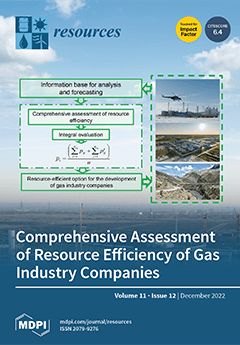River-flow forecasts are important for the management and planning of water resources and their rational use. The present study, based on direct multistep-ahead forecasting with multiple time series specific to the XGBoost algorithm, estimates the long-term changes and forecast monthly flows of selected
[...] Read more.
River-flow forecasts are important for the management and planning of water resources and their rational use. The present study, based on direct multistep-ahead forecasting with multiple time series specific to the XGBoost algorithm, estimates the long-term changes and forecast monthly flows of selected rivers in Ukraine. In a new, applied approach, a single multioutput model was proposed that forecasts over both short- and long-term horizons using grouped or hierarchical data series. Three forecast stages were considered: using train and test subsets, using a model with train-test data, and training with all data. The historical period included the measurements of the monthly flows, precipitation, and air temperature in the period 1961–2020. The forecast horizons of 12, 60, and 120 months into the future were selected for this dataset, i.e., December 2021, December 2025, and December 2030. The research was conducted for diverse hydrological systems: the Prut, a mountain river; the Styr, an upland river; and the Sula, a lowland river in relation to the variability and forecasts of precipitation and air temperature. The results of the analyses showed a varying degree of sensitivity among rivers to changes in precipitation and air temperature and different projections for future time horizons of 12, 60, and 120 months. For all studied rivers, variable dynamics of flow was observed in the years 1961–2020, yet with a clearly marked decrease in monthly flows during in the final, 2010–2020 decade. The last decade of low flows on the Prut and Styr rivers was preceded by their noticeable increase in the earlier decade (2000–2010). In the case of the Sula River, a continuous decrease in monthly flows has been observed since the end of the 1990s, with a global minimum in the decade 2010–2020. Two patterns were obtained in the forecasts: a decrease in flow for the rivers Prut (6%) and the Styr (12–14%), accompanied by a decrease in precipitation and an increase in air temperature until 2030, and for the Sula River, an increase in flow (16–23%), with a slight increase in precipitation and an increase in air temperature. The predicted changes in the flows of the Prut, the Styr, and the Sula rivers correspond to forecasts in other regions of Ukraine and Europe. The performance of the models over a variety of available datasets over time was assessed and hyperparameters, which minimize the forecast error over the relevant forecast horizons, were selected. The obtained RMSE parameter values indicate high variability in hydrological and meteorological data in the catchment areas and not very good fit of retrospective data regardless of the selected horizon length. The advantages of this model, which was used in the work for forecasting monthly river flows in Ukraine, include modelling multiple time series simultaneously with a single model, the simplicity of the modelling, potentially more-robust results because of pooling data across time series, and solving the “cold start” problem when few data points were available for a given time series. The model, because of its universality, can be used in forecasting hydrological and meteorological parameters in other catchments, irrespective of their geographic location.
Full article





